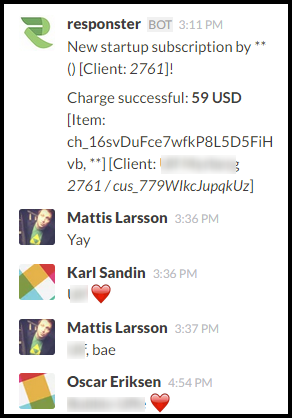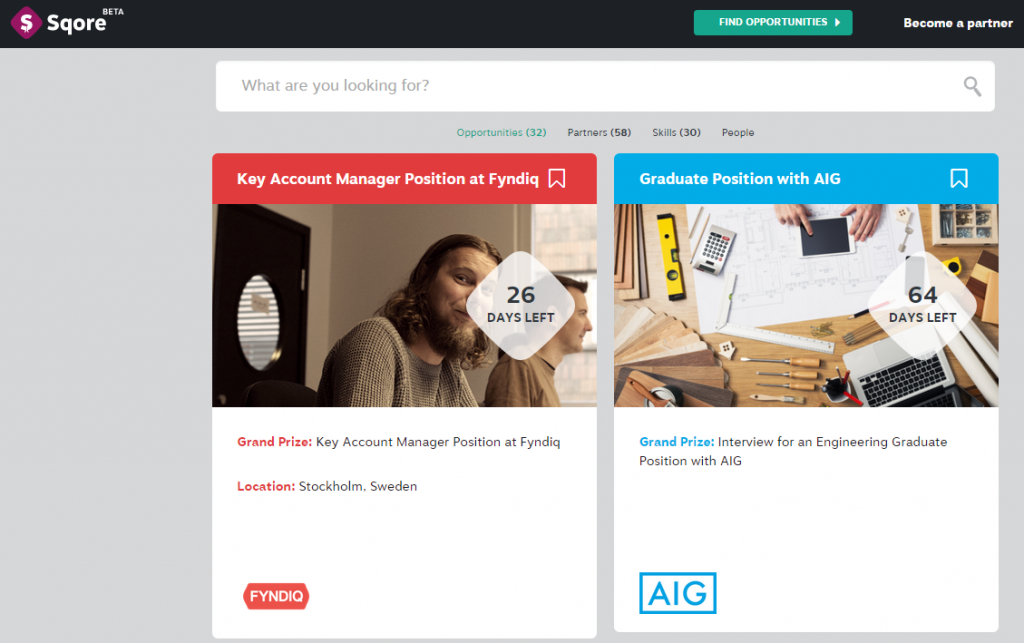
Every morning between 8 and 9am, our team trickles into a cozy office building in southwestern Stockholm. We brew our coffee, we have a morning meeting, and we do stand-ups so that every member of the crew knows what everyone else has on their plate.
Just as important as our morning routine, however, is our mindset:
Just like you, we dream big.
We dream of our product being used by millions. We dream of becoming a household name in the business world (so, um, an ‘officehold’ name?). We dream that more than a few of you are really going to get some value out of this blog post. But sometimes, we dream up ideas and plans so big that we get ourselves into trouble.
We did a lot of that this week, and here’s what we learned from it.
Failure #1) We didn’t really plan ahead.
In the startup world, the importance of setting goals is often rehashed over and over again. The problem, however, seems to be in the fact that setting goals is actually really easy, but setting useful, specific goals can be a bit more difficult.
Recently, I got brought on by Responster to, among other things, write this blog and work on putting out content for small businesses and startups.
Last week, we got the framework of the blog live, and while we had a rough idea of the content types we were going to put out, I was pretty much “winging it” with what I wrote and when.
It took less than a week for that to fall apart.
Very quickly, the problems of not being structured and planning ahead became apparent.
See, one of my goals in producing content for this blog that really hit you with something that is both entertaining and useful. To help with that, it’s a good idea to break up all of these words with some nice, vibrant images that help to show, not just tell.
Unfortunately, I have the artistic talent of a potato.
That’s why we’ve got our brilliant designer, Teemu.

Try not to get lost in those eyes.
Teemu is good. Really good. But he’s also damn busy.
My not planning ahead properly on our content schedule lead to me ambushing Teemu with image sourcing and design tasks on a short deadline.. more than once.
If he was able to accommodate the requests at the time, it meant a lot of extra stress on him. If he couldn’t, it meant a bottleneck on me; I then had to choose between coming up with my own (subpar) imagery, or delaying blog posts until something better was ready.
It was barely a week into the blog and we were I was already falling behind – yikes!
Since then, our CEO, Alex, and I sat down to structure out a week-in-advance schedule for all of our posts except for these company updates, which are written and scheduled 3-4 days in advance.
I’ve got high hopes for this specific pipeline approach to content, and it’s something we probably should have done from the beginning, if any of the blogs we read are something to go by.
In any event, I hope to be able to come back in a few weeks and let you know whether it’s working for us or not.
Failure #2) We Wanted To Do Everything (And We Still Do!)
It’s no secret that spreading yourself thin is a major risk when working in a small team, and it’s even more dangerous when one aspect of the business falls squarely on an individual’s shoulders (I get a ton of support, but content strategy is largely something I have to take sole responsibility for right now).
Unfortunately, I can be a bit of a “firecracker factory”.
As Tablr CEO and co-founder Mark Schinkel puts it in a two-years-old-yet-still-relevant Quora answer on common causes of failing startups, having too many ‘firecracker factories’ in key roles can have a detrimental effect:

My degree is in “creative advertising”, which basically means I’ve been trained to spit out 147 different ideas on a given topic, whittle them down to some great concepts, then ship them off to a production team to bridge the gap between concept and final output. In short, I’m an ideas guy.
Stepping onboard with a startup has been a crash course in reformatting how I work.
Currently, I’m managing our blog, twitter, facebook, google+ communities, LinkedIn communities, instagram, tumblr, Inbound discussions, and keeping up with influencer outreach, to name just a few.
Plus, the things I want to try but haven’t gotten around to yet include guest blogging, livestreaming, podcasting, paid traffic, and custom landing page split testing.
The result? A tiny bit of progress in a whole lot of channels.
More than once this week, I felt like I worked a mile-a-minute, but at the same time found myself thinking “what the heck did I actually accomplish today?” when I went home in the evening.
That should be a red flag!
So, yesterday, we sat down and set a deadline: Friday the 16th of October.
That’s less than one week from today, and it’s the date we’re going to use Google analytics to weed out our under-performers in terms of traffic driving and engagement, and drop those channels (or at the very least greatly reduce hours put into them). The goal is to free up more time for getting really good at the few channels we see actual, proven potential in.
Is populating our Pinterest boards useless? Does anyone on LinkedIn care what we’re talking about and actually engage? We’ve got an idea, and we’re gonna attach numbers to those hunches real soon.
I want to end this section with a great image that popped up in a google+ group for small businesses this week:

Cheers to marketer William Seibler for sharing this image.
We all work really hard here, but there are still a finite number of hours in the day, so finding just a couple of places to really dig into – and cutting out the peripheral efforts – is going to be my next move. Most likely, that will look like a lot of personal outreach and time spent on killer content creation.
Ultimately, however, we’re going to take a deep breath and wait on the numbers before making any decisions on what to cut out. We will of course be sharing with you whatever we find out.
The Silver Linings:
The point of this post was to talk about mistakes, but I also want to make sure we’re giving due attention and praise to the things we succeeded with recently – the mini victories!
Here’s a brief summary of accomplishments the Responster team saw in the past 7 days:
- We released a new product version with custom solutions requested by our clients.
- Our magician of a salesman, Ali, closed deals with some awesome new enterprise customers (which we hope to turn into feedback case studies for you soon!).
- We celebrated our wins as they came; here’s a look at some Slack chat goofiness that ensued after a new subscription alert popped up:

Chipping away, one beloved customer at a time.
Closing Things Out, and Our First “Startup Spotlight”:
Remember that new, structured posting pipeline I mentioned earlier? Well, part of our plan for these Startup Sunday posts involves giving a shoutout to another startup or small business each week.
This could be someone whose tool or software we use personally, or that we want to use, or an outfit that simply has an interesting, potential-filled concept.
So, without further adieu:
Shoutout to…

Sqore is a company that’s been on my radar for two reasons:
1) I actually applied for a job with them a couple of months back (spoiler alert: I was unsuccessful).
2) They’ve got a pretty cool idea.
The Stockholm-based company is built around the gamification of a relatively boring process: recruitment.
Specifically, Sqore has set out to make recruitment for scholarships, travel grants, and coveted job positions more interactive for applicants and more insightful for clients (or “partners”) by turning them into competitions.
For example, a company using Sqore to source a stellar designer for their team could bypass the traditional job listing —> applicant screening —> portfolio scanning —> interviewing —> interviewing again —> practical task —> final interview stage process in favor of skill tests and creative competitions that make potential hires show off their skills in relevant assignments from day 1.

Disclaimer: Jesus does not, to the best of our knowledge, actually work at Fyndiq.
They’re still in self-declared beta, but the number of customers (or ‘partners’ as they’re listed) has steadily increased over the past couple of months, which has brought new listings and populated the site with new opportunity types.
They could take off, or they could hit a brick wall – that’s just the startup reality, isn’t it? – but they’re an interesting outfit to keep an eye on, nonetheless. And hey, maybe the next time you’ve got a position at your company, you bypass heavy recruiter costs or the use of your own time and host a competition on Sqore instead. Food for thought, anyways.
Want to see your company in next week’s Startup Spotlight?
Drop a comment below about what makes your business rad, and we just might be in touch! These are companies we genuinely think are cool (not paid endorsements), so be sure to bring your A-game!
Oh yeah, and don’t forget to subscribe to this blog for extras and weekly goodness.
—
Brandon Landis
Chief Customer Happiness Wizard and Community Manager @ Responster